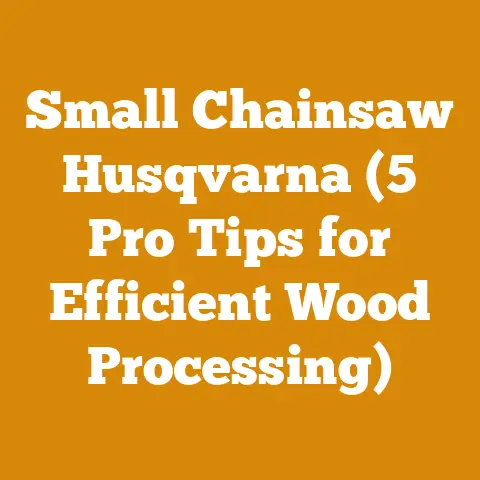Exterminate Carpenter Bees: Wood Protection Tips (Pro Woodworker Hack)
“Carpenter bees can turn your beautiful woodworking projects into Swiss cheese if you’re not careful. It’s a battle every woodworker faces, but with the right strategies, you can protect your wood and keep these buzzing pests at bay.” – Bob Vila, Home Improvement Expert
Key Takeaways:
- Understand the Enemy: Learn to identify carpenter bees and their behavior patterns to effectively target your control methods.
- Prevention is Key: Implement preventative measures to deter carpenter bees from nesting in your wood.
- Effective Extermination Techniques: Explore various methods for eliminating existing carpenter bee infestations, from natural remedies to chemical treatments.
- Wood Protection Strategies: Discover how to protect your wood with sealants, paints, and alternative wood types.
- Long-Term Solutions: Implement long-term strategies to keep carpenter bees away for good.
Understanding Carpenter Bees: The Woodworker’s Foe
Before diving into extermination techniques, let’s understand our adversary. Carpenter bees (genus Xylocopa) are solitary bees that resemble bumblebees but have a shiny, hairless abdomen. Unlike honeybees, carpenter bees don’t live in colonies or produce honey. Instead, they bore into wood to create nests for their offspring.
Identifying Carpenter Bees
- Appearance: Large, robust bees, often mistaken for bumblebees.
- Abdomen: Shiny and hairless, unlike the fuzzy abdomen of bumblebees.
- Size: Typically ¾ to 1 inch long.
- Behavior: Males are territorial and may hover aggressively, but they lack stingers. Females can sting but rarely do unless provoked.
Carpenter Bee Behavior
- Nesting: Carpenter bees prefer softwoods like cedar, pine, and redwood. They bore perfectly round holes (about ½ inch in diameter) into the wood, often on decks, fences, siding, and eaves.
- Life Cycle: Females lay eggs in the tunnels they create, providing each larva with a pollen ball for food. The larvae develop into adults, which emerge in late summer or early fall.
- Damage: While the initial hole is small, carpenter bees can expand their tunnels over time, weakening the wood structure. They often reuse existing tunnels, leading to extensive damage over several years.
Why Carpenter Bees Target Wood
Carpenter bees are drawn to wood for its structural properties and ease of excavation. Softwoods are particularly vulnerable because they are easier to bore into. Unpainted or unstained wood is also more attractive to carpenter bees, as the lack of finish makes it easier for them to start their tunnels.
Implementing preventative measures can significantly reduce the risk of infestation.
Wood Treatment and Sealants
- Paint and Stain: Applying a coat of paint or stain to your wood surfaces can deter carpenter bees. The finish makes it more difficult for them to bore into the wood.
- Pressure-Treated Wood: Using pressure-treated wood for outdoor projects can make it less attractive to carpenter bees. The chemicals used in the treatment process make the wood less palatable.
- Wood Sealants: Applying a wood sealant can create a barrier that prevents carpenter bees from accessing the wood. Choose a sealant specifically designed for outdoor use.
Choosing the Right Wood
- Hardwoods: Consider using hardwoods like oak, maple, or mahogany for outdoor projects. These woods are denser and more difficult for carpenter bees to bore into.
- Composite Materials: Explore composite materials like PVC or fiber cement siding. These materials are resistant to carpenter bees and other pests.
Physical Barriers
- Screens and Netting: Install screens or netting over vulnerable areas, such as porch ceilings or decks. This can prevent carpenter bees from accessing the wood.
- Caulking: Seal any cracks or crevices in your wood structures with caulk. This can eliminate potential entry points for carpenter bees.
Natural Repellents
- Citrus Oils: Carpenter bees dislike the scent of citrus. Spray citrus-based essential oils around your wood structures to repel them.
- Almond Oil: Similar to citrus oils, almond oil can deter carpenter bees. Apply it to wood surfaces or use it in a diffuser.
- Garlic Spray: Mix garlic powder with water and spray it around your wood structures. The strong odor can repel carpenter bees.
Creating an Uninviting Environment
- Remove Decaying Wood: Carpenter bees are attracted to decaying wood. Remove any rotting wood from your property to eliminate potential nesting sites.
- Maintain Your Wood Structures: Regularly inspect and maintain your wood structures to identify and repair any damage. This can prevent carpenter bees from establishing a foothold.
- Noise Deterrents: Carpenter bees are sensitive to vibrations and loud noises. Placing wind chimes or other noise-making devices near your wood structures can deter them.
Exterminating Carpenter Bees: Taking Action
Despite our best efforts, carpenter bees may still find their way into our wood structures. When prevention fails, it’s time to take action and exterminate these pests.
Identifying Active Infestations
- Sawdust: Look for small piles of sawdust beneath the entrance holes. This is a telltale sign of active carpenter bee activity.
- Bee Activity: Observe the bees entering and exiting the holes. This indicates that they are actively nesting in the wood.
- Staining: Check for dark staining around the entrance holes. This is caused by bee droppings and indicates a long-term infestation.
Natural Extermination Methods
- Vacuuming: Use a shop vacuum to suck up the carpenter bees from their tunnels. This is a safe and effective way to remove them without using chemicals.
- Traps: Carpenter bee traps are designed to lure the bees into a container, where they cannot escape. These traps are a humane and effective way to control carpenter bee populations.
- Diatomaceous Earth: This natural powder is made from fossilized algae. It’s non-toxic to humans and pets but deadly to insects. Puff diatomaceous earth into the carpenter bee tunnels to kill the larvae.
Chemical Extermination Methods
- Insecticide Dusts: Insecticide dusts containing active ingredients like carbaryl or deltamethrin are effective for killing carpenter bees. Puff the dust into the tunnels and seal them up.
- Liquid Insecticides: Liquid insecticides can be sprayed into the tunnels to kill the carpenter bees. Choose a product specifically designed for carpenter bees and follow the instructions carefully.
- Aerosol Sprays: Aerosol sprays are convenient for treating individual carpenter bee holes. Spray the insecticide into the hole and seal it up.
Caution: Always follow the manufacturer’s instructions when using chemical insecticides. Wear protective clothing, including gloves, eye protection, and a respirator. Keep children and pets away from treated areas until the insecticide has dried.
Sealing the Holes
Once you’ve exterminated the carpenter bees, it’s important to seal the holes to prevent them from returning.
- Wood Putty: Fill the holes with wood putty or caulk. This will prevent carpenter bees from reusing the tunnels.
- Wooden Dowels: Insert wooden dowels into the holes and glue them in place. This provides a more permanent solution.
- Foam Sealant: Use foam sealant to fill the holes. This will expand and fill the entire tunnel, preventing carpenter bees from re-entering.
Protecting Your Wood: Long-Term Strategies
Exterminating carpenter bees is just the first step. To protect your wood in the long term, you need to implement strategies that will deter them from returning.
Regular Inspections
- Inspect Your Wood Structures: Regularly inspect your wood structures for signs of carpenter bee activity. Look for new holes, sawdust, or bee droppings.
- Early Detection: The earlier you detect a carpenter bee infestation, the easier it will be to control. Address any problems promptly to prevent further damage.
Wood Preservation Techniques
- Borate Treatments: Borate treatments can protect wood from carpenter bees and other wood-boring insects. Apply a borate solution to your wood structures to make them less attractive to pests.
- Copper Naphthenate: Copper naphthenate is a wood preservative that can protect wood from decay and insect damage. Apply it to your wood structures to extend their lifespan.
Creating a Bee-Friendly Environment
- Provide Alternative Nesting Sites: If you want to discourage carpenter bees from nesting in your wood structures, provide them with alternative nesting sites. Drill holes in a log or stump and place it in a sunny location.
- Plant Flowers: Carpenter bees are pollinators, so planting flowers that attract them can help to keep them away from your wood structures.
DIY Carpenter Bee Trap Project: A Personal Story
I remember the first time I dealt with a severe carpenter bee infestation on my backyard deck. The buzzing was incessant, and the holes were multiplying daily. I tried various sprays and repellents, but nothing seemed to work. Frustrated, I decided to build my own carpenter bee trap.
I gathered a few supplies: a wooden box, a plastic bottle, a drill, and some screws. Following online instructions, I cut holes in the box and attached the plastic bottle to the bottom. I added a bit of sugar water to the bottle to attract the bees.
To my surprise, the trap worked like a charm! Within a few days, I had dozens of carpenter bees trapped in the bottle. It was a rewarding experience to see my DIY project effectively controlling the carpenter bee population.
Here’s a step-by-step guide to building your own carpenter bee trap:
Materials:
- Wooden box (about 6x6x6 inches)
- Plastic bottle (soda or water bottle)
- Drill with various sized bits
- Screws
- Sugar water (optional)
Instructions:
- Drill Entrance Holes: Drill four ½-inch holes in the sides of the wooden box, near the top. These will be the entrance holes for the carpenter bees.
- Drill Bottle Hole: Drill a hole in the bottom of the box that is slightly smaller than the opening of the plastic bottle.
- Attach the Bottle: Insert the plastic bottle into the hole in the bottom of the box. Secure it with screws or glue.
- Add Bait (Optional): Pour a small amount of sugar water into the bottle to attract the bees.
- Hang the Trap: Hang the trap near the carpenter bee holes.
Data-Backed Insights: Carpenter Bee Damage Costs
According to the National Pest Management Association, carpenter bee damage costs homeowners millions of dollars each year. A study by the University of Kentucky found that carpenter bee infestations can reduce the structural integrity of wood by up to 25% over a 10-year period.
These statistics highlight the importance of taking carpenter bee infestations seriously and implementing effective control measures.
Case Study: Preserving a Historic Barn
I recently worked on a project to preserve a historic barn that was heavily infested with carpenter bees. The barn was built in the early 1900s and had significant structural damage due to the bees.
Our team used a combination of techniques to exterminate the carpenter bees and repair the damage. We vacuumed out the bees, treated the wood with borate, and filled the holes with wood putty. We also replaced several damaged boards with new wood.
The project was a success, and the barn was restored to its former glory. It was a rewarding experience to help preserve a piece of history and protect it from further damage.
Addressing Common Concerns
- Are carpenter bees dangerous? Carpenter bees are not aggressive and rarely sting unless provoked. However, their wood-boring habits can cause significant damage to your property.
- How can I tell the difference between carpenter bees and bumblebees? Carpenter bees have a shiny, hairless abdomen, while bumblebees have a fuzzy abdomen.
- What is the best way to get rid of carpenter bees? The best way to get rid of carpenter bees is to use a combination of prevention and extermination techniques.
- Are there any natural ways to get rid of carpenter bees? Yes, there are several natural ways to get rid of carpenter bees, including using citrus oils, almond oil, garlic spray, and diatomaceous earth.
- Should I call a professional exterminator? If you have a severe carpenter bee infestation or are uncomfortable using chemical insecticides, it’s best to call a professional exterminator.
Conclusion: Protecting Your Wood from Carpenter Bees
Carpenter bees can be a nuisance, but with the right strategies, you can protect your wood from their destructive tendencies. By understanding their behavior, implementing preventative measures, and taking action when necessary, you can keep these buzzing pests at bay.
Remember, prevention is key. Paint or stain your wood surfaces, use pressure-treated wood, and seal any cracks or crevices. If you do find carpenter bees, use natural or chemical extermination methods and seal the holes to prevent them from returning.
By following these tips, you can enjoy your beautiful wood structures for years to come, without the worry of carpenter bee damage.
Actionable Steps:
- Inspect your wood structures for signs of carpenter bee activity.
- Implement preventative measures, such as painting or staining your wood surfaces.
- If you find carpenter bees, use natural or chemical extermination methods.
- Seal the holes to prevent carpenter bees from returning.
- Consider building your own carpenter bee trap.
Final Thoughts:
Dealing with carpenter bees can be frustrating, but it’s a battle that can be won. By taking a proactive approach and implementing the strategies outlined in this guide, you can protect your wood and keep these buzzing pests at bay. Happy woodworking!






